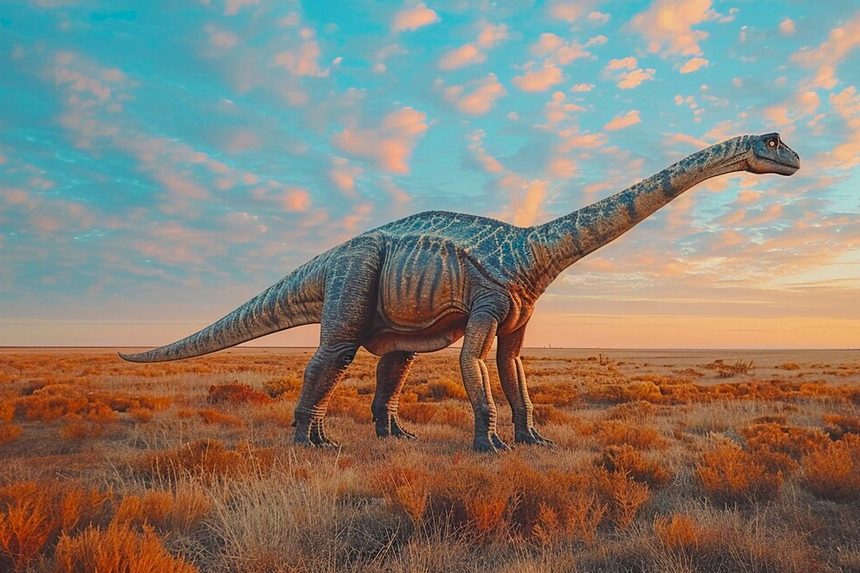Remarkably, a quarry in Oxfordshire has turned up the biggest dinosaur trackway site yet found in the United Kingdom. About 200 huge dinosaur footprints found on the 166 million-year-old site expose important information about the prehistoric life that prowled the earth. Thought to belong to the long-necked sauropod called Cetiosaurus and the smaller carnivorous Megalosaurus, the traces provide a rare window into the ancient world of dinosaur footprints.
- What was revealed by the discovery of ancient footprints in the quarry?
- How in the Prehistoric Past Were the Footprints Preserved?
- Revealed during the excavation and 3D mapping of the tracks was what?
- How might the site be kept intact for next generations?
- Why Does This Discovery Matter so Much for Our Knowledge of Prehistoric Life?
What was revealed by the discovery of ancient footprints in the quarry?
Originally found by Gary Johnson, a digger operator at Dewars Farm Quarry, the footprints were first As Johnson dug clay from the ground, he came upon odd lumps in the dirt. He first believed it was just an aberration, but as he kept on, he saw more consistent ridges and dips. “I assumed I was the first one to spot them. And it was so weird, a little tingling sensation, truly,” Johnson remembered.
The find was not totally surprising. Johnson thought the bumps and dips on the quarry floor were probably dinosaur footprints after another dinosaur trackway site was discovered close by in the 1990s. His assumption was verified, and the place soon attracted great scientific attention.
Tell us what the massive tracks discovered in the quarry reveal.
The traces discovered at the site offer proof of two different kinds of dinosaurs once living in the area. Thought to belong to the plant-eating sauropod Cetiosaurus, the biggest tracks run 150 meters long. Rising to heights of up to 18 meters, these enormous dinosaurs were among the biggest of the Jurassic period. Though on a far larger scale, the traces of Cetiosaurus match those of contemporary elephants.
By comparison, the tiny tracks are from the nimble, meat-eating Megalosaurus. Experts said that although the Megalosaurus prints are “a caricature of a dinosaur footprint,” they clearly show three different toes in the preserved impressions. Measuring between 6 and 9 meters in length, the two-legged, walking Megalosaurus was among Britain’s biggest carnivorous dinosaurs during the Jurassic era.
How in the Prehistoric Past Were the Footprints Preserved?
The shallow lagoon setting where the footprints were found probably saw dinosaurs prowling in quest of food. Although the exact preservation of these impressions is unknown, scientists hypothesize that a storm event would have quickly deposited sediments, therefore preserving the footprints rather than washing them away.
“The really lovely thing about a dinosaur footprint, particularly if you have a trackway, is that it is a snapshot in the life of the animal,” one researcher said. “You can pick knowledge about the animal’s motion. You can discover exactly the nature of the surroundings it inhabited. Tracks thus provide us a completely distinct collection of data not available from the bone fossil record.”
Revealed during the excavation and 3D mapping of the tracks was what?
More than a hundred researchers, students, and volunteers joined the quarry excavation crew this summer. The scientists found five different trackways, four of which were ascribed to sauropods and one to the Megalosaurus. To enable a thorough study of the tracks and their relevance, the team also gathered more than 20,000 pictures to produce 3D models of the site and the individual footprints.
One really fascinating finding came at the junction of the sauropod and Megalosaurus tracks. The researchers were able to identify which species originally passed through the area thanks to the remarkably good preservation of the prints. They came to the conclusion that it was the sauropod since the three-toed Megalosaurus walking on top of its big, circular footprint slightly squished down the front edge.
“Knowing that this one individual dinosaur walked across this surface and left exactly that print is so exhilarating,” remarked another researcher. “You could sort of picture it moving through, dragging its legs out of the muck as it was going.”
How might the site be kept intact for next generations?
Scientists are investigating methods of site preservation for the next generations while the excavation goes on, collaborating with Smiths Bletchington, the quarry operator, and Natural England. Though just a tiny area of the quarry has been dug, the team thinks more dinosaur tracks are probably just waiting to be found.
“We don’t know exactly what happened, but it might be that there was a storm event that came in, deposited a load of sediments on top of the footprints, and meant that they were preserved rather than just being washed away,” one paleobiologist remarked. “Something had to have occurred to preserve these in the fossil record.”
Although the site’s destiny is yet unknown, the excavation has given priceless new understanding about the life of these extinct species. The footprints provide an amazing window into a far-off past that lets both experts and the general public picture a world in which sauropods like Megalosaurus prowled the planet.
Why Does This Discovery Matter so Much for Our Knowledge of Prehistoric Life?
“This is one of the most amazing track sites I have ever seen, in terms of scale, in terms of the size of the tracks,” one micropaleontologist said. “You can walk back in time and get an idea of what it would have been like, these huge creatures just roaming around, going about their own business.”
It is evident from the continuous attempts to protect and investigate this remarkable site that the quarry in Oxfordshire will keep offering significant finds that advance our knowledge of the world of dinosaur footprints, behavior, and habitat.








